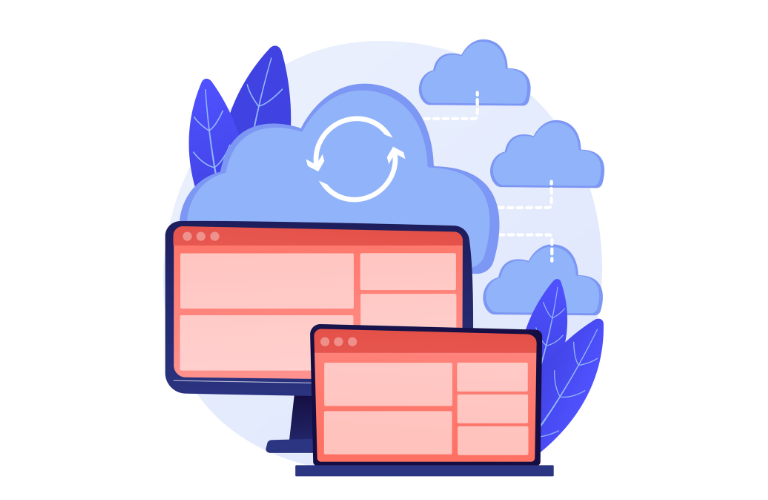Serverless PHP in 2025 is transforming how developers build and deploy applications, offering a scalable, cost-effective way to run PHP code without managing servers. This guide explores how PHP thrives in serverless architectures, with a focus on platforms like AWS Lambda and Azure Functions.
Whether you’re a seasoned PHP developer or new to the cloud, you’ll find practical insights, use cases, implementation steps, and time-saving tips to address pain points like slow performance and high costs. Let’s dive into the world of Serverless PHP in 2025 and unlock the power of Function-as-a-Service (FaaS)!
Table of Contents
What Is Serverless PHP?
Serverless computing is a cloud-based model where the provider handles infrastructure, dynamically allocating resources as needed. Despite the name, servers exist, but developers are freed from managing them. Serverless PHP in 2025 brings this approach to PHP applications, often through Function-as-a-Service (FaaS), where code runs in response to events and you’re billed only for actual usage.
This shift lets you focus on writing PHP code, not server upkeep. Platforms like AWS Lambda, launched in 2014, popularized this model, while tools like Bref and Laravel Vapor make Serverless PHP in 2025 accessible and powerful.
Why Use Serverless PHP in 2025?
Traditionally, hosting a PHP app meant buying server hardware—expensive and tedious to maintain. Cloud computing cut costs by renting server space, but serverless goes further. Here’s why Serverless PHP in 2025 shines:
- Cost Efficiency: Pay only for the time your PHP code runs. No traffic? No cost.
- Scalability: Handle sudden spikes—thousands of requests—instantly without extra setup.
- Simplified Development: Focus on coding, not server management or scaling worries.
For PHP developers, this means less stress and more time to build features, making Serverless PHP in 2025 ideal for modern apps.
Key Features of Serverless PHP
Deploying Serverless PHP in 2025 is straightforward and flexible. You upload your PHP code, and the vendor manages the rest. Here are standout features:
- Easy Deployment: No server setup—just upload and go.
- Language-Agnostic Functions: Mix PHP with other languages for modular apps (e.g., a login in PHP, a status update in JavaScript).
- Event-Driven: Functions trigger on actions, spawning “warm” (existing) or “cold” (new) instances.
- Auto-Scaling: Vendors handle thousands of concurrent requests effortlessly.
A cold start might delay slightly, but scalability excels when traffic surges, a key strength of Serverless PHP in 2025.
Is It Really Serverless?
Don’t be fooled by “serverless.” Servers still process your PHP code in the cloud. The “-less” reflects your perspective: no server management, no provisioning, no patching. With Serverless PHP in 2025, the cloud provider handles all backend tasks, letting you focus on delivering value through code.
Serverless PHP vs. BaaS
Serverless computing, often tied to FaaS, differs from Backend-as-a-Service (BaaS). Both outsource server tasks, but here’s how they vary:
- Structure: Serverless splits apps into functions; BaaS mirrors traditional apps.
- Scalability: Serverless auto-scales with traffic; BaaS may need add-ons.
- Triggers: Serverless is event-driven; BaaS might run continuously.
- Modularity: Serverless functions can run on different servers seamlessly.
Serverless PHP in 2025 leans toward FaaS, perfect for event-driven, scalable tasks.
Use Cases for Serverless PHP in 2025
Complex apps might not fully suit serverless, but modules thrive. Here are practical use cases:
- Serverless Databases: Run queries on-demand with tools like Amazon Aurora or Google Cloud Datastore. Scale easily, pay per use.
- File Storage: Use object storage (e.g., IBM Cloud) via REST-like APIs, storing files as data and metadata objects.
- APIs & Mobile Backends: Build lightweight, interdependent functions for fast, scalable responses.
These examples show how Serverless PHP in 2025 tackles real-world needs efficiently.
Advantages of Serverless PHP
Serverless PHP in 2025 offers compelling benefits, driving its popularity:
- Reduced Costs: Pay-per-use beats traditional hosting, especially during idle times.
- Easier Deployment: Upload functions, skip server config—done in minutes.
- Scalability: Auto-scale to handle traffic spikes without lifting a finger.
These perks address pain points like high costs and complex setups, making Serverless PHP in 2025 a smart choice.
Drawbacks to Consider
No solution is perfect. Consider these tradeoffs with Serverless PHP in 2025:
- Performance Lag: Cold starts (spawning new instances) take milliseconds, impacting time-critical apps.
- Vendor Lock-In: Migration is tough—your code ties to one provider’s setup.
- Debugging Challenges: Rely on vendor logs, which can complicate finding issues.
Weigh these against benefits to decide if Serverless PHP in 2025 fits your project.
Simple Implementation: Serverless PHP with Bref on AWS Lambda
Let’s walk through a basic Serverless PHP in 2025 setup using Bref on AWS Lambda. Bref, a Composer package, simplifies PHP deployment on AWS.
Pre-Requisites
- Create an AWS account at aws.amazon.com.
- Install the Serverless Framework:
npm install -g serverless- Generate and configure AWS credentials:
serverless config credentials --provider aws --key <key> --secret <secret>- Install Bref via Composer:
composer require bref/bref- Install dependencies:
composer install --prefer-dist --optimize-autoloader --no-devHello World Example
Create a simple “Hello World” function. Save this as index.php:
require __DIR__.'/vendor/autoload.php';
lambda(function ($event) {
return 'Hello World from Serverless PHP in 2025!';
});Configure it with a serverless.yml file. Run this to auto-generate:
vendor/bin/bref initA basic serverless.yml looks like:
service: app
provider:
name: aws
runtime: provided
plugins:
- ./vendor/bref/bref
functions:
hello:
handler: index.php
layers:
- ${bref:layer.php-83}Test locally:
serverless invoke -f helloDeploy to AWS:
serverless deploy --verboseThis deploys a Serverless PHP in 2025 app, returning “Hello World” when triggered!
Time-Saving Shortcuts
Speed up your Serverless PHP in 2025 workflow with these tips:
- Use Bref’s Init Command: vendor/bin/bref init auto-sets your serverless.yml.
- Verbose Deployment: Add –verbose to serverless deploy for detailed logs.
- Local Testing: Test with serverless invoke -f hello before deploying.
- Optimize Dependencies: Run composer install –no-dev to slim down your package.
These shortcuts save time, reduce errors, and streamline Serverless PHP in 2025 projects.
Other Deployment Options
Beyond AWS, explore these for Serverless PHP in 2025:
- Laravel Vapor: Launched in 2019, this converts Laravel apps to AWS Lambda functions. Ideal for Laravel fans, it’s user-friendly and robust.
- Azure Functions: No official PHP support, but custom setups work—try this Azure deployment example (see external link below).
Check Bref’s maturity matrix to ensure compatibility before committing.
Serverless PHP on Major Platforms
AWS LambdaAWS leads Serverless PHP in 2025. Bref makes deployment simple, scaling instantly. Costs are low—e.g., a 128MB Lambda costs $1.7*10^-9/ms, offering 164 hours of compute for $1.
Azure FunctionsMicrosoft Azure lacks native PHP support, but custom runtimes work. It’s less common, so resources are scarce compared to AWS.
Google CloudGoogle Cloud Platform supports serverless via Cloud Functions, but PHP tools lag. Focus remains on AWS for Serverless PHP in 2025.
Solving Pain Points
Slow performance and high costs plague traditional PHP hosting. Serverless PHP in 2025 helps:
- Performance: Cold starts lag, but warm instances and auto-scaling handle spikes fast.
- Cost: Pay-per-use cuts idle expenses—e.g., externals.io dropped from $50 to $17/month on AWS.
- Simplicity: No server management frees you to code.
Key Takeaways
Serverless PHP in 2025 empowers developers to build scalable, cost-effective apps. Before diving in, consider:
- Grasp serverless basics—FaaS, scaling, and costs.
- Evaluate app complexity, time sensitivity, and growth needs.
- Test with Bref on AWS for a low-risk start.
For simpler hosting, try managed WordPress like Kinsta, with global data centers and expert support. Ready to leverage Serverless PHP in 2025? Start small, scale big!
FAQs
1. What is Serverless PHP in 2025?
Serverless PHP in 2025 is a cloud-based approach where PHP code runs on demand without you managing servers. The provider handles infrastructure, and you pay only for the time your code executes, using platforms like AWS Lambda or Azure Functions.
2. How does Serverless PHP in 2025 save costs?
With Serverless PHP in 2025, you’re billed only for actual usage. If your app has no traffic, you pay nothing, unlike traditional hosting where servers run 24/7. This pay-per-use model cuts costs, especially for low or sporadic traffic.
3. Can Serverless PHP in 2025 handle high traffic?
Yes! Serverless PHP in 2025 auto-scales instantly. Platforms like AWS Lambda spawn instances to handle thousands of requests, ensuring your app stays responsive during traffic spikes without manual setup.
4. Is Serverless PHP in 2025 truly serverless?
Not exactly. Servers exist, but they’re managed by the cloud provider. Serverless PHP in 2025 means you skip server maintenance, focusing on coding while the provider handles scaling and upkeep.
5. What are common uses for Serverless PHP in 2025?
Serverless PHP in 2025 shines for:
- On-demand databases (e.g., Amazon Aurora)
- File storage via object APIs (e.g., IBM Cloud)
- APIs and mobile backends with fast, scalable functions
6. Does Serverless PHP in 2025 work with all PHP apps?
Not always.




